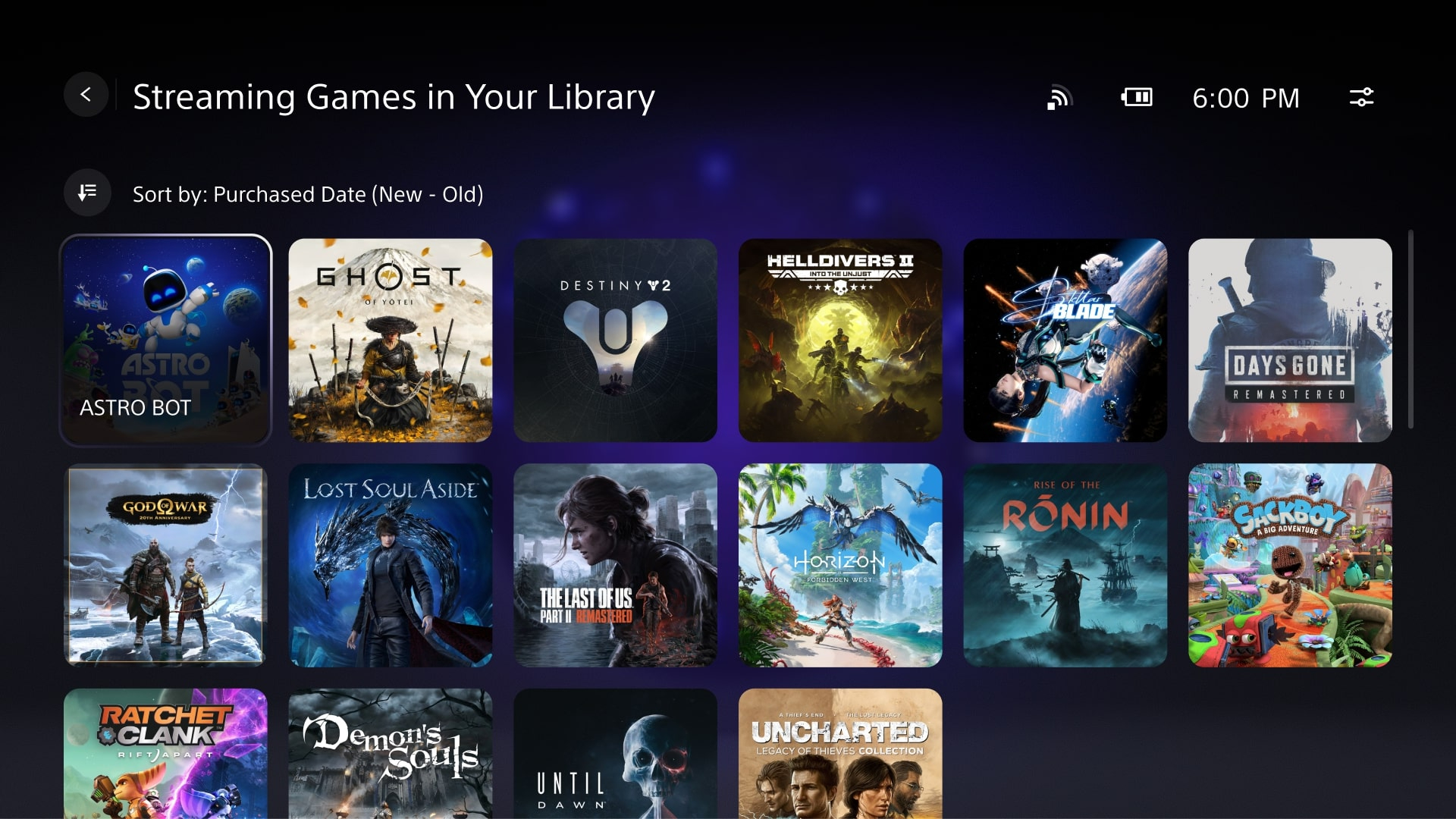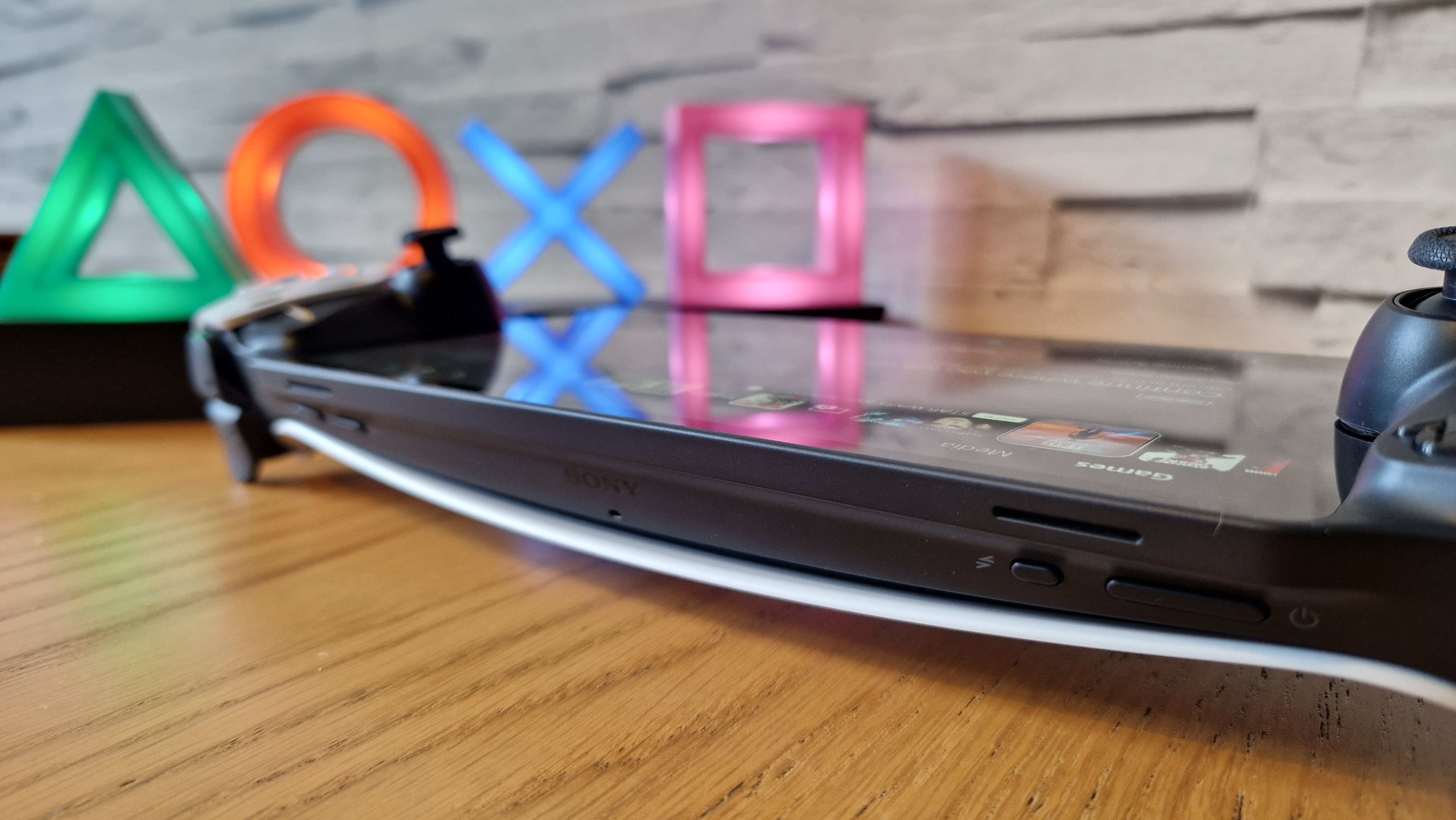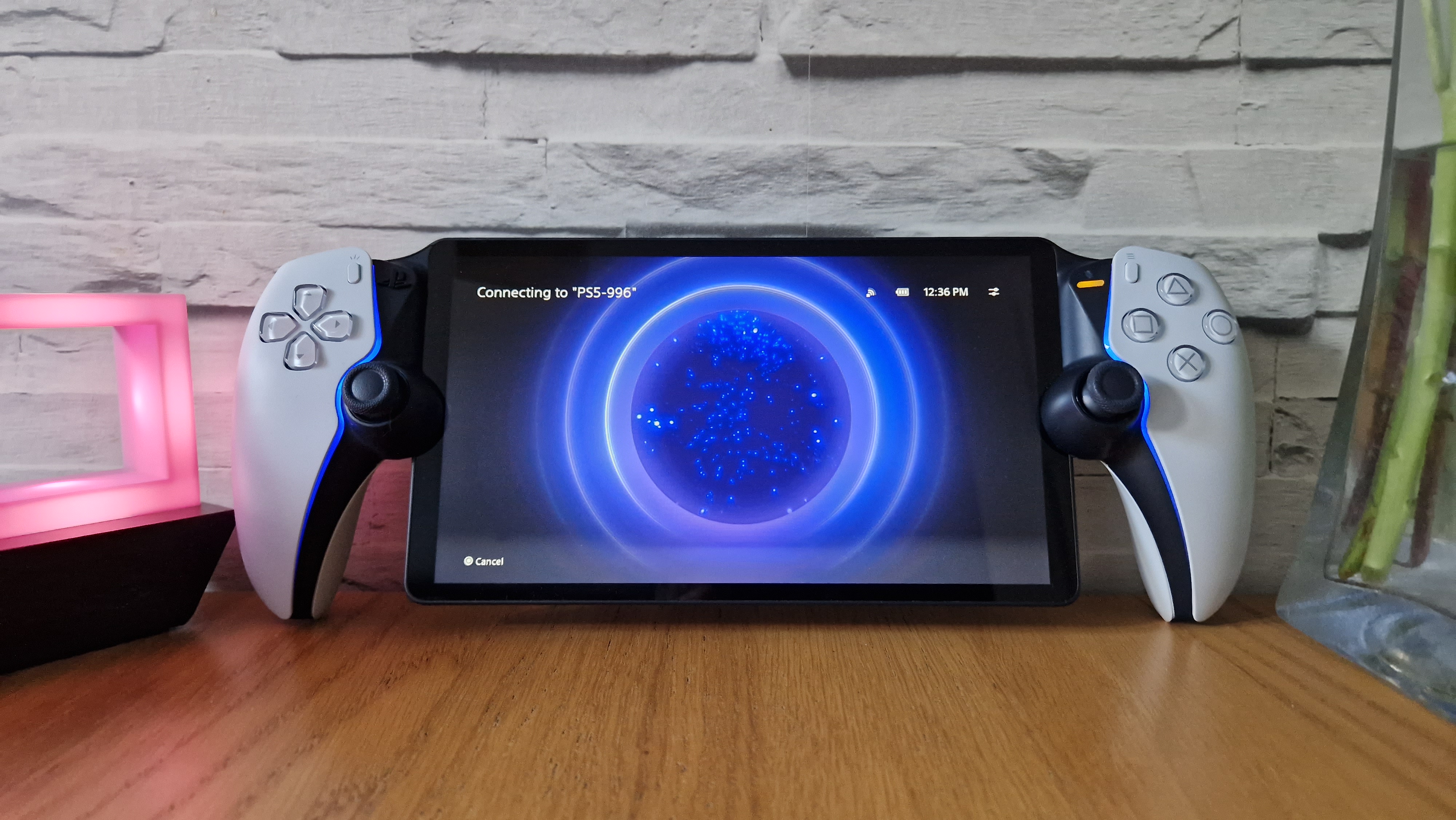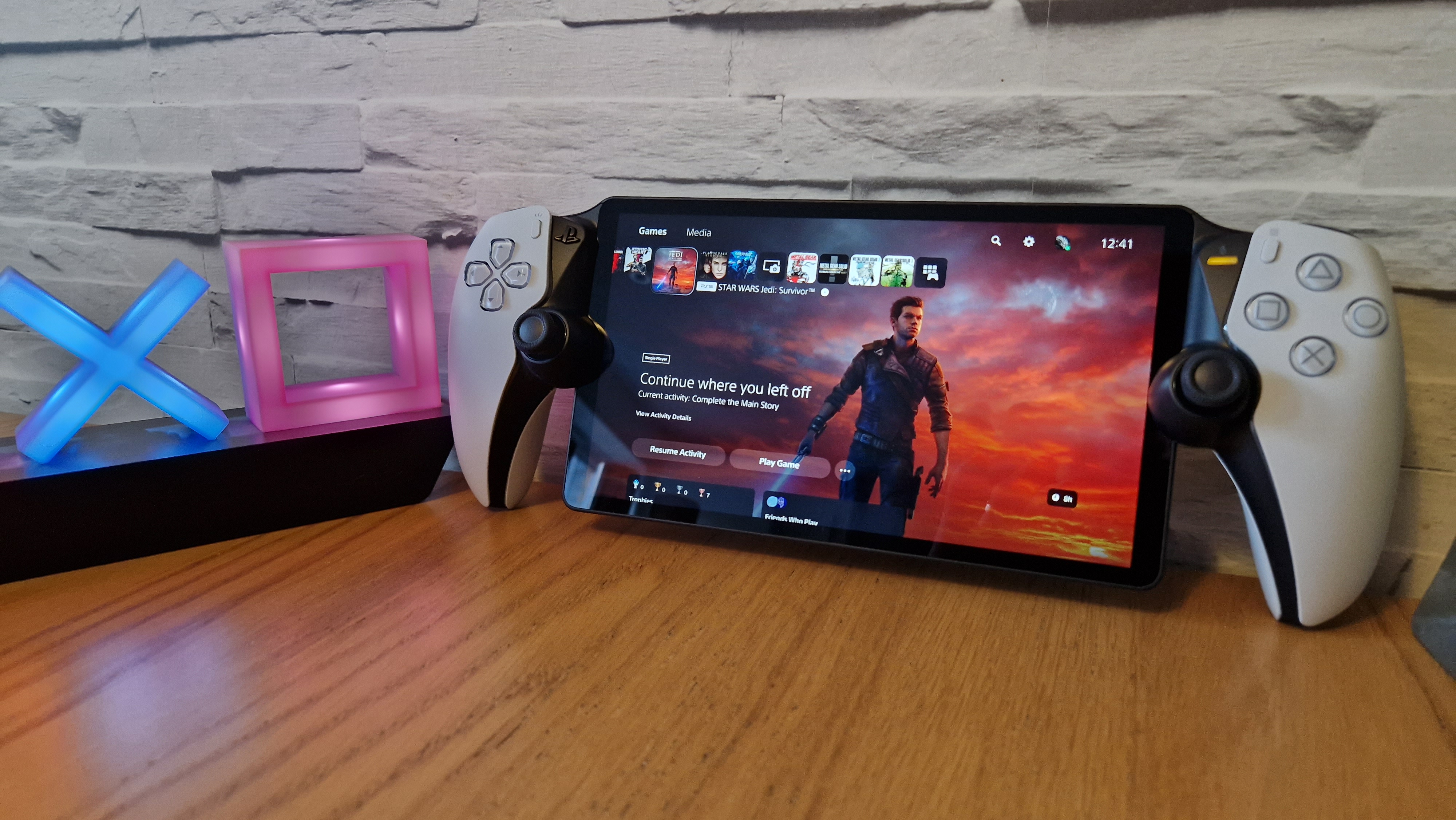TechRadar Verdict
The PlayStation Portal excels as a Remote Play device. Offering a smooth and stable way to play your PlayStation 5 library in your hands, the design, build, features, and ergonomics shine in this handheld device. A tremendous success.
Pros
- +
The best way to play your PS5 games remotely
- +
Ergonomic and accessible design with strong build quality
- +
Brilliantly translates PS5 games to a handheld device
- +
Update: Can be a standalone cloud streaming device
Cons
- -
LCD screen can show its limitations
- -
Sluggish battery charging
- -
Update: Need a PlayStation Plus Premium sub to cloud stream
Why you can trust TechRadar
The PlayStation Portal is the latest in Sony’s PlayStation 5 hardware lineup. Pitched firmly as a PS5 accessory that will enable portable access to your console and game library through an internet connection. It’s a simple prospect and one that utilizes Sony’s PS Remote Play app concept - but deploys it brilliantly in a dedicated device.

In November 2025, the PlayStation Portal received a huge update to its functionality and its OS. The biggest update was the change to its cloud streaming prowess, which it now fully offers to all users with a PlayStation Plus Premium subscription.
This enhancement means the Portal is now a bona fide cloud streaming device for Premium members. Those players can also stream their own PS5 games (as long as they're on this list and owned digitally), which is a huge boon. The update also provided a huge OS overhaul and has taken the Portal's performance to another level, ensuring it has rightly earned the five-star score I originally gave it.
The rest of my review on this page is as it was when the Portal released back in November 2023.
To be clear, the PlayStation Portal is exactly that: a small window into your PS5. While not strictly among the best handheld games consoles as it lacks the ability to play games natively like the Nintendo Switch, the PlayStation Portal isn’t trying to be that. It’s offering something entirely different. The terrific news is that it absolutely delivers on what it promises, and is a magnificent device for those who utilize Remote Play or want a portable way into their PS5.
Offering superb ergonomics as well as excellent design and build quality with all those exquisite DualSense controller features on top, this Remote Play beaut and its bright and sharp 8-inch LCD screen present a wonderful portable PS5 experience. One that I’ve already incorporated into my everyday home life.
PlayStation Portal review: price and availability
The PlayStation Portal is out now and costs $199.99 / £199.99. While stock was initially really hard to find after the handheld launched, it is now readily available in all regions. However, discounts are few and far between.
In terms of comparison, the cheapest Steam Deck (the 64GB model) is now $349 / £309, the ASUS ROG Ally starts at $599.99 / £599, and the Nintendo Switch Lite is the closest in price with an MSRP of $199.99 / £200.
However, it’s worth remembering that the Portal is not a system that can play games natively like the above devices. Its sole purpose is to use the Remote Play system (like the Backbone One controller) to stream your PS5, which you need to have invested in already.
As of November 2025, however, you don't need a PS5 to own and use a PlayStation Portal. The handheld can now be used on its own to stream games from the cloud if you have a PlayStation Plus Premium subscription.
Sign up for breaking news, reviews, opinion, top tech deals, and more.
PlayStation Portal review: design and features
Essentially a DualSense controller wrapped around an 8-inch LCD display, the PlayStation Portal has an immediately familiar design, build, and feel. It quickly feels at home in the hands of a PS5 owner and is comfortable, easy to handle, and a joy to interact with. It’s also a bit heavier and larger than you might expect. Its weight of 18.66oz / 529g doesn’t sound too heavy, but it is noticeable, especially when picking it up with one hand.

That largely comes down to the overall size of the device. Coming in at 12in / 30.5cm in length, there’s a notable heft to the Portal that you’ll initially have to get used to. Otherwise, it’s 2.4in / 6cm high to the top of the thumbsticks which are smaller than the DualSense’s sticks and are those found on the PSVR 2 Sense controllers - and about 4.7in / 12cm from front to back.
The controller wings feature everything that a normal DualSense has, with the only slight difference being some button placement - the PS Home button is tucked into the top right corner of the left wing, and the mic mute button gets the same treatment on the top left of the right wing. Otherwise, it’s got the same grippy feel, the buttons are the same in their actuation, and the only material difference is the aforementioned smaller thumbsticks.
On the top, there are two stereo speakers, the power button, volume up and down buttons, and the PlayStation Link button. The latter will only be of use once you can pair your Portal with the Pulse Elite headset, or the upcoming Pulse Explore earbuds. Completing the set, on the rear, there’s the USB-C port for charging and a 3.5mm audio jack for wired headsets; this keeps the cables tidily out of the way when you’re playing.
The PlayStation Portal feels sturdy too, like it could survive a bump or two if it fell off your lap. However, I have already decided to invest in a screen protector and possibly some form of case to give it an extra layer of protection. From an ergonomics standpoint, it’s one of the best handheld gaming devices going; having been designed and built around a controller, feel, fit, and form can come first, as opposed to other handhelds which have to prioritize a game-playing system first, then bolt on buttons and controls.
PlayStation Portal review - Performance and battery life

Simply put, the PlayStation Portal performs brilliantly. It nails its function, and in all my hours of testing so far, has been a joy to use and hasn’t had any hiccups in connectivity or any input lag to speak of.
It begins with a very quick pairing and logging-in process before you’re greeted by a bright screen with familiar-looking UI and menus. When you log in (and out) of your PS5 from the Portal, you even get a cool portal graphic which is a pleasant touch.
When you turn on the Portal while your PS5 is in rest mode, it will automatically boot the console up and get you straight in. You can disengage or re-engage the main console while the Portal is on at will too.
Getting right to how it plays games and works as a remote play device, the Portal offers a sublime Remote Play experience. It is so much better than using Remote Play functionality on my PC; the difference is like night and day. Whereas my PC would have visual lag and crackly audio at times, the connection with the Portal is seamless and smooth. Also, when comparing it with the picture on my TV to test input lag, I get barely any, and if it is there it is totally discernable.
For context, my home internet speeds are around 150Mbps down and around 30-40Mbps up, and while my PS5 is hardwired via ethernet cable, my main Wi-Fi router is in a cupboard under the stairs. But even with my router tucked away, the Portal continues to provide a quality, lag-free experience, never missing a beat regardless of the room I was in.
I have also connected it to my neighbor's Wi-Fi (with his consent), used my 5G connection (which runs at about 20-25Mbps download speed where I live) from my Samsung S23 phone, and tested it with a variety of games. Aside from taking slightly longer to connect with my PS5 over those separate internet connections, the PlayStation Portal is a relentless performer. Testing it for online play in Back 4 Blood, I found the experience identical to that when playing with my friends on the main console, and it’s even possible - with slight delays in reconnecting to the PS5 - to switch from one internet connection to another mid-session.

The screen is crisp and bright - a bit too bright at times, particularly when I first booted a game up - and proves more than worthy on the Portal. The worlds of Star Wars Jedi: Survivor and the city lights of Marvel’s Spider-Man 2’s New York are a delight. There are, however, a few times when the LCD screen can show its limitations and have me yearning for an OLED panel; on images like dark save screens, you can identify lines and edges of blocks of color as opposed to a smooth gradient. Largely, though, it's bright, vivid, and perfect for the Portal. It also handles different quality or performance modes in games smoothly.
The Portal’s speakers are punchy and do the job, but, predictably, struggle at the low end given they are only two small stereo speakers squished into the Portal's narrow form. There’s no Bluetooth support on the device, but I wrote a short while ago about how the lack of the feature doesn’t matter, and I would say that’s still the case having lived with the Portal for a good few days now: when you’re plugged in and wearing a headset, playing on the sofa, or in bed, the experience has been the same as using a DualSense for me - I quickly and totally forget that I’m tethered.
The DualSense features operate as expected too, ensuring the Portal offers the same immersive gaming experience as you’d get with your main console. The touchscreen functionality is a success too; it only takes a couple of taps to replicate pressing the normal touchpad, and it's nice and responsive when using it to navigate te the Protal's UI too. Team this with the overall comfort of playing with the Portal for hours at a time, and the quality in its form factor and design is further reinforced.
Battery life is about on par with the DualSense controller. With the controller haptics and features enabled, I got just over six hours of life out of a full charge. I did tinker with screen brightness as that’s quite piercing at its highest level. I got the low battery warning at the four-and-a-half-hour mark, but the Portal kept going for that extra one and a half hours. You can also tone down screen brightness, and turn off features to squeeze more battery life in. The PlayStation Portal does take more than two hours to fully charge, so this is worth factoring into your intended play habits with the device.
I would like a sliding scale of brightness to be introduced down the line, as it’s pretty binary as it stands. I would also welcome a battery indicator that had visible numbers, as at the moment it’s just three chunks in a battery symbol.
Should I buy the PlayStation Portal?

The PlayStation Portal is a brilliant handheld gaming device. It excels in its niche, offering ergonomic design and form, a wonderfully bright screen, and a host of PS5 features as standard. The Portal is an essential PS5 accessory for Remote Play users and for those looking to get more out of their console, and I cannot recommend it highly enough.
I would also add, as I was told by Sony about the PlayStation Access controller, that the Portal is part of the PS5 ecosystem so it could benefit from future models down the line. This could pave the way for an OLED screen, the latest Wi-Fi, Bluetooth support, and more in the future.
The Portal is not pretending to be anything else apart from a quality remote-play device for your PS5, and it absolutely nails its brief. As long as you come to it knowing what it does and what it can offer you, then it wholeheartedly, unabashedly, spectacularly succeeds.
Buy it if...
You need a convenient way to play your PS5 game library
Knocking all other Remote Play options out of the park, if you’re looking for an extra way to play your PS5 then the Portal’s performance and functionality offer the best way to do just that.
You want an ergonomic handheld gaming device
By virtue of being based on the DualSense, the PlayStation Portal is one of the most ergonomic and accessible handheld gaming consoles you can get right now.
Don't buy it if...
You're looking for a cloud streaming or native handheld
The Portal is not for cloud streaming or playing games natively; it is only for mirroring and streaming your PS5.
How we tested the PlayStation Portal
The Portal has been the only way I’ve played my PS5 since it arrived a few days ago, and I have put more than 12 hours into testing. I’ve used the Portal for two full battery charges, all around my house, and neighbors’ homes, and testing it on my mobile phone’s 5G connection. I spent hours using the Portal’s own speakers as well as with a wired Razer Kaira X headset, and I played a multitude of games, including Marvel’s Spider-Man 2, Star Wars Jedi Survivor, and Atomic Heart, while also testing out online multiplayer in Back 4 Blood.
First reviewed October-November 2023

Rob is the Managing Editor of TechRadar Gaming, a video games journalist, critic, editor, and writer, and has years of experience gained from multiple publications. Prior to being TechRadar Gaming's Managing Editor, he was TRG's Deputy Editor, and a longstanding member of GamesRadar+, being the Commissioning Editor for Hardware there for years, while also squeezing in a short stint as Gaming Editor at WePC just before joining TechRadar Gaming. He is also a writer on tech, gaming hardware, and video games but also gardens and landscapes, and has written about the virtual landscapes of games for years.
You must confirm your public display name before commenting
Please logout and then login again, you will then be prompted to enter your display name.
